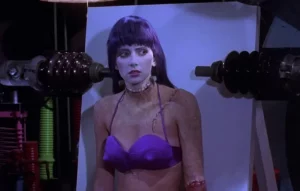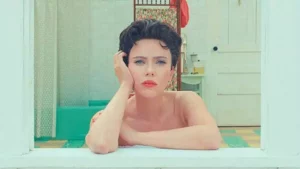
Despite underperforming at the box office, Stephen Spielberg’s epic adaptation of the musical classic, WEST SIDE STORY garnered rave reviews (92% approval on Rotten Tomatoes), and seven Oscar noms. Now, I’m joining the droves that are catching up with it since it dropped on HBO Max last week.
After both dabbling and diving deep into nearly every cinematic genre known to mankind, Spielberg presents to us his first musical, a big bustling showcase with show-stopping production numbers, sweeping visuals, and ambitious performances. Yet for all its lofty entertainment value, Spielberg doesn’t quite make the material his own.
Leonard Bernstein and Stephen Sondheim’s mostly catchy compositions, popularized by the 1957 Broadway smash, and the 1961 Robert Wise-directed interpretations have been re-produced, re-staged, covered, and parodied so many times that folks who haven’t seen any version may feel like they have a working knowledge going in. That’s how I felt as it’s been decades since I’ve seen the original film, and mostly just remember some songs, and bits of the choreography.
I’m not going to get too detailed with the story, as it’s also familiar to most folks, being that it’s reheated Romeo and Juliet set in New York City’s Upper West Side in 1957. The star-crossed lovers here are Tony (Ansel Elgort), and Maria (Rachel Zegler), and Shakespeare’s rich feuding families, the Montagues and Capulets, have become the rival gangs, the scruffy white “Jets,” and the Puerto Rican “Sharks.”
Tony and Maria’s courtship is cute, but too high school play-ish for any real spark to ignite. Elgort (who I regularly mix up with Tye Sheridan) summons a bit of charm and verve for his lovestruck Tony, while Zegler seems a bit nervous about putting herself completely into Maria’s voice. It’s her film debut so she’s still wet behind the ears I guess.
I was somewhat annoyed by the nasal voice (and tough attitude as he’s pretty runty looking) of Mike Faist as Jets leader Riff, but I remember being annoyed by Russ Tamblyn in the ’61 version too. More effective are the turns in the supporting ensemble by Arian DeBose, David Alverez, and Rita Moreno, who, of course, was in the original film, and gets to sing a song (“Somewhere”) on her own.
Longtime Spielberg cinematographer Janusz Kamiński’s camera glides through the streets, and lots of Harlem, Washington Heights, Queens, Brooklyn, and the Bronx pleasingly, but, apart from the rumble scene inside a salt warehouse, and the big “I Feel Pretty” Gimbel’s set-piece dance number, the interior shots aren’t as visually interesting.
Spielberg has said that this isn’t a remake, but I’m considering it a remix with a new screenplay by Tony Kushner (another Spielberg veteran), and a mild re-imagining of all the melodic elements. There may be some modern touches here and there, but the ultra-popular filmmaker doesn’t fuss with the formula, or mess with the ingredients; he just attempts to apply his tried and true brand of movie magic on the project. The resulting effect is pure superficial showbiz.
It’s been noted that WEST SIDE STORY ’21 was a casualty of the pandemic in that, with its Spielberg pedigree, and its beloved background, it may have been a big hit during a different time. But I’m not so sure that it would have broken the box office even without omicron in the air. I doubt it’s going to come anywhere near replacing the original in the classic canon either.
WEST SIDE STORY is up for seven Oscars including Best Picture, Best Actress for DeBose, Best Production Design, Best Sound, Best Costume Design, Best Cinematography, and Best Director. I bet it’ll win maybe two or three of these Awards, but won’t say which ones until I make my full predictions a few days before the Oscars ceremony on March 27.
More later…





